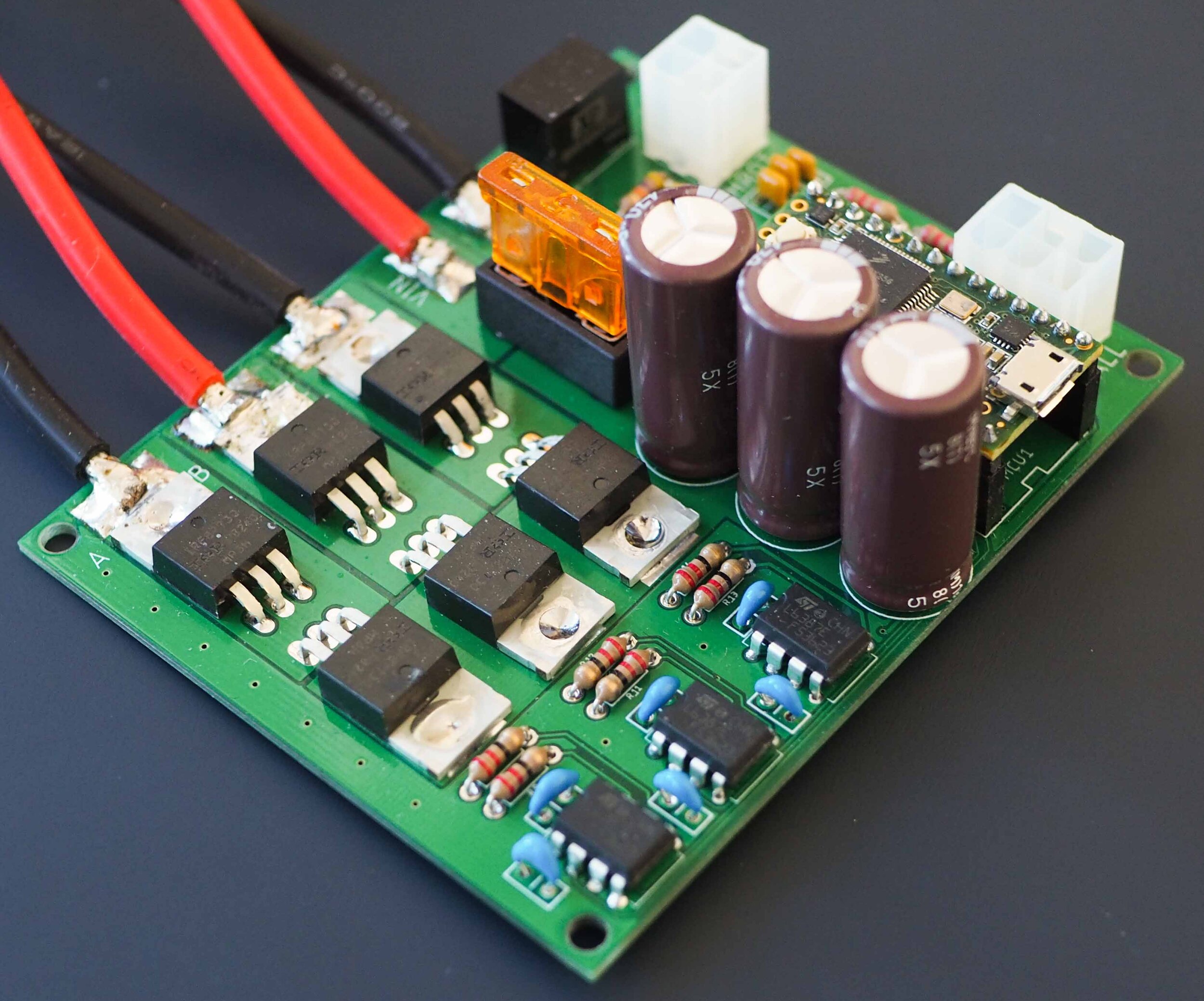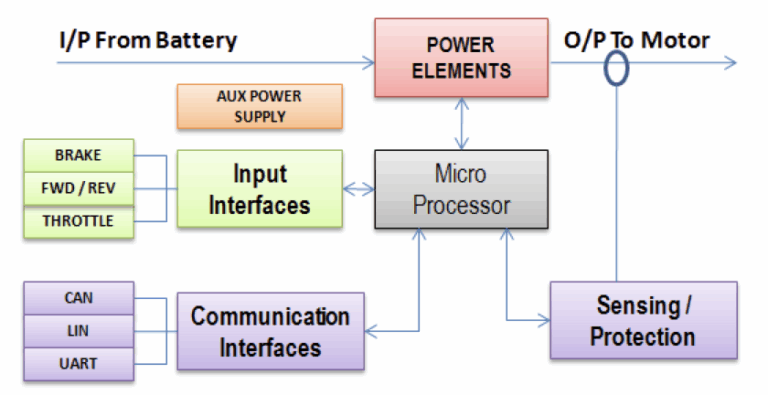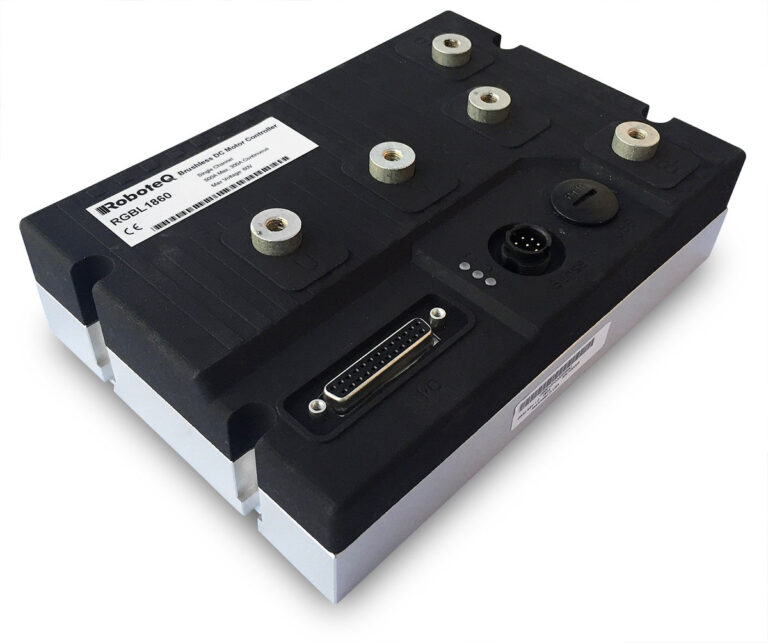
add here text

What is an EV Motor Controller and Why Does It Matter?
pratik r. sonawane
June 07, 2025
related topics
⚡ Introduction: What is an EV Motor Controller and Why Does It Matter?
ectric vehicles (EVs) are revolutionizing transportation, but beyond batteries and motors lies a crucial component: the EV motor controller. This device controls how power flows from the battery to the motor, managing speed, torque, and regenerative braking.
Whether you’re an EV enthusiast or simply curious about how electric cars work, understanding the EV controller’s role is key to appreciating how these vehicles deliver smooth, efficient, and safe performance. In this article, we’ll explore how EV controllers operate and why they are essential for every electric vehicle on the road today.
🧾 Quick Summary:Understanding the Role of EV Controllers in Electric Vehicles
The EV motor controller is a vital electronic control unit that manages the efficient transfer of power from the high-voltage battery to the electric motor in electric vehicles (EVs). It processes critical inputs from the accelerator pedal, brake system, and motor sensors to regulate motor speed, torque, and power delivery using advanced control algorithms like Field-Oriented Control (FOC) and Pulse Width Modulation (PWM).
Equipped with a high-frequency inverter, the controller converts DC battery power into precise three-phase AC power, ensuring smooth and responsive motor operation. It also manages regenerative braking, capturing kinetic energy to recharge the battery and extend driving range. Continuous real-time monitoring and diagnostics safeguard against electrical faults, overheating, and system failures, guaranteeing reliable and safe EV performance.
Understanding the role of the EV motor controller is essential for anyone interested in electric vehicle technology, EV drivetrain efficiency, and the future of clean mobility.
🧠 What Is an EV Controller?

An EV controller is a power electronics device that acts as the interface between the battery and the electric motor. Its job is to control speed, torque, direction, and regenerative braking, while ensuring efficiency, safety, and responsiveness.
Converts DC battery power to 3-phase AC for the motor
Manages motor speed and torque
Handles real-time safety protections
Enables regenerative braking
Communicates with the vehicle’s battery management system (BMS) and central EC
⚙️ How It Works: Simplified Breakdown

1. Inputs from Driver and Vehicle Sensors
The EV controller continuously receives real-time data from various inputs:
Accelerator pedal position sensor: Indicates driver’s throttle demand.
Brake pedal sensor: Detects braking actions to enable regenerative braking.
Motor rotor position sensors (Hall effect or encoder): Provide precise rotor angle and speed for accurate motor control.
Battery Management System (BMS): Supplies battery voltage, current limits, temperature, and state-of-charge information.
Using these inputs, the controller determines the required motor torque and speed.
2. Signal Processing and Control Algorithm Execution
At its core, the controller uses a digital signal processor (DSP) or a high-speed microcontroller to execute control algorithms in real time. These include:
Pulse Width Modulation (PWM): Controls the switching of power transistors to regulate voltage and current supplied to the motor.
Field-Oriented Control (FOC): The preferred method in modern EVs, FOC decouples the motor current into two orthogonal components — the direct axis (flux) and quadrature axis (torque). This enables precise, smooth torque control, higher efficiency, and better dynamic response compared to traditional trapezoidal or sinusoidal control methods.
Trapezoidal and Sinusoidal Control: Simpler control schemes sometimes used in lower-cost or smaller motors like brushless DC (BLDC) motors.
The controller continuously calculates the required phase currents and switching patterns to meet driver commands while optimizing performance.
3. Power Conversion: DC to AC via Inverter
The controller contains a power inverter, typically composed of high-power MOSFETs or IGBTs, which converts the battery’s high-voltage DC into three-phase AC power required by the electric motor. Key aspects include:
Switching Frequency: Usually between 10 to 20 kHz, which affects efficiency and audible noise.
PWM Techniques: Generate controlled sinusoidal waveforms with precise voltage and frequency to control motor speed and torque.
Thermal Management: Power devices require cooling to handle high currents and maintain reliability.
This inverter stage is critical for translating the controller’s commands into motor rotation.
4. Regenerative Braking Control
When the driver lifts off the accelerator or applies the brakes, the controller reverses the motor operation to function as a generator. Key points:
Energy Recovery: Converts kinetic energy back into electrical energy, feeding it into the battery and improving overall vehicle range.
Power Regulation: The controller manages voltage and current to ensure battery safety, preventing overcharging or damage.
Brake Blending: Coordinates regenerative braking with mechanical brakes for smooth deceleration and optimal energy recovery.
Effective regen control enhances energy efficiency and reduces brake system wear.
5. Real-Time Monitoring and Safety Management
EV controllers incorporate comprehensive safety and diagnostic features, continuously monitoring:
Overcurrent and Short Circuit Protection: To avoid damage from electrical faults.
Thermal Sensors: Monitor motor and controller temperature to prevent overheating.
Battery Voltage and Current Limits: Ensures operations remain within safe battery parameters.
Motor Performance: Detects anomalies such as rotor stalls or abnormal vibrations.
Insulation and Ground Fault Detection: Critical for high-voltage safety compliance.
The controller can shut down or derate power delivery proactively to protect components and occupants.
🧰 Types of EV Motor Controllers
1. BLDC Controller (Brushless DC Motor)

Common in e-bikes, scooters, and light EVs
Uses trapezoidal or sinusoidal control
Cost-effective, compact
2. PMSM Controller (Permanent Magnet Synchronous Motor)

Found in most modern EVs (Tesla, BYD, Kia EV6)
Uses advanced FOC or vector control
High efficiency and performance
3. AC Induction Motor Controller

Used by early Tesla models
No permanent magnets
Less efficient but rugged and cost-effective
📈 Why EV Controllers Are Critical to Performance
A well-designed controller:
Increases driving range through energy efficiency
Enables smooth acceleration and torque response
Allows advanced features like regenerative braking, launch control, and traction control
Ensures battery and motor protection
🔮 Future Trends in EV Controller Technology
AI and Machine Learning for predictive control
SiC (Silicon Carbide) and GaN (Gallium Nitride) power devices for ultra-high efficiency
Modular controllers for autonomous EV platforms
Cloud-connected diagnostics and over-the-air (OTA) updates
🔎 EV Controller Architecture: Key Components
| Component | Function |
|---|---|
| Microcontroller / DSP | Runs motor control algorithms |
| Power Inverter | Switches DC to AC power |
| Gate Drivers | Controls MOSFETs/IGBTs switching |
| Current Sensors | Monitors phase current |
| Position Sensors | Tracks motor rotation (Hall, encoder) |
| Cooling Interface | Fan or liquid cooling control |
| CAN Bus Interface | Communicates with ECU/BMS |
🚀Conclusion: A Brighter Future for EV Services in India
Whether it’s a luxury electric sedan or a compact electric scooter, the motor controller is the key component that determines how smoothly and safely the vehicle moves. As EVs continue to evolve, so too will their controllers — becoming faster, smarter, and more efficient.
If you’re building, buying, or studying EVs, understanding the EV controller system is essential for appreciating how electric vehicles truly work.
❓ Frequently Asked Questions (FAQs)
While no special training is required, it's important to follow manufacturer guidelines for charging and maintenance to ensure longevity.
Regularly follow maintenance tips provided by the manufacturer, including proper charging and periodic checkups.
Currently, service centers are limited in rural and smaller towns, but the network is expanding.

about author
Share this article
subscribe for weekly updates




30 Comments
منصة موثوقة تعرض خيارات متعددة للمراهنة. تأسست هذه المنصة في عام 2020 وسرعان ما أصبحت واحدة من الأسماء الرائدة في صناعة المراهنات
888 stars [url=https://gdtsim.com/888-starz-%d9%85%d8%b5%d8%b1-%d9%85%d9%86%d8%b5%d8%a9-%d8%a7%d9%84%d9%83%d8%a7%d8%b2%d9%8a%d9%86%d9%88-%d9%88%d8%a7%d9%84%d9%85%d8%b1%d8%a7%d9%87%d9%86%d8%a7%d8%aa-%d8%a7%d9%84%d8%b1%d9%8a%d8%a7%d8%b6/]https://gdtsim.com/888-starz-%d9%85%d8%b5%d8%b1-%d9%85%d9%86%d8%b5%d8%a9-%d8%a7%d9%84%d9%83%d8%a7%d8%b2%d9%8a%d9%86%d9%88-%d9%88%d8%a7%d9%84%d9%85%d8%b1%d8%a7%d9%87%d9%86%d8%a7%d8%aa-%d8%a7%d9%84%d8%b1%d9%8a%d8%a7%d8%b6/[/url]
Plai in [url=https://original-aviator-game.com/]online aviator game[/url] and experience the adrenaline rush with every bet!
A major feature of the Aviator game is its straightforward nature, making it accessible to newcomers.
Prepare for an adventure that goes beyond our solar system. The Project Hail Mary PDF is your ticket to the stars. This digital book is perfect for anyone who loves exploration. Read the story that proves we are not alone in the universe. https://projecthailmarypdf.top/ where to watch project hail mary
Picking the right foundation shade can be challenging, especially when accounting for different skin tones like fair olive, yellow undertones, or olive complexion. A great tip is to inspect your skin’s undertones by looking at your veins—green-tinted veins usually represent warm undertones, while sapphire or purple point to cool undertones. If you wish to dive deeper into seasonal color analysis, instruments like free color analysis tests and personal style quizzes can support you figure out if you belong to summer, winter, or other palettes, which makes finding foundation and makeup shades much simpler [url=https://color-analysis-ai.org]best colors for autumn palette[/url] .
Learning your color season not only benefits with makeup but also directs you in finding clothing colors that flatter your complexion. For example, subtle summer color palettes tend to blend beautifully with light olive skin, while a cool winter palette fits those with pale skin and blue veins. If you’re interested about hair color, software with virtual hair color try-on features and hair color simulators are fantastic for testing trends like hair color 2026 before making a decision. Overall, selecting foundation and learning your color season can genuinely refine your personal style and confidence!
[url=https://play-boy888.com/]playboy888[/url]
Many users around the world find Playboy888 to be an intriguing online destination.
Discover a world of entertainment with [url=https://777bet-live.com/]777bet casino[/url], where unforgettable gaming moments and big wins await you!
Whether you are into conventional sports betting or the dynamic world of esports, 777bet has something for everyone.
В казино [url=https://aviator-1win-app.ru]1win aviator играть[/url] игроки могут наслаждаться захватывающими взлетами и множеством возможностей для выигрыша.
А также предлагаются разнообразные настольные игры для истинных ценителей.
¿Te sientes ansiosa constantemente en tu relación? Algo no está bien https://lasmujeresqueamandemasiadopdf.cyou/ las mujeres que aman demasiado pdf gratis
Spend a luxurious evening with [url=https://goodday4play-casino.com/]goodday 4play casino[/url]!
This initiative highlights the importance of balancing work and play in our daily routines.
[url=https://aviator-game-owner.com/]aviator game online[/url] offers an exciting experience and the opportunity to win real money directly from your device.
Many players are drawn to the Aviator game, an exciting online betting experience.
Wicked temptress needs to expose her bare flesh. Here — rb.gy/8rrwju?Bon
Погрузитесь в мир азартных игр и испытайте удачу в [url=https://minedrop-games.com/]майн дроп слот[/url], где каждый спин может стать выигрышным!
Игра в слот mine drop будет наиболее выгодной, если участвовать в акциях казино.
The platform 888starz has become renowned for providing a diverse range of thrilling games.
888starz online casino [url=https://beautynewsindia.com]https://beautynewsindia.com/[/url]
[url=https://777bet-login-registration.com/]777 bet[/url].
Players are drawn to this platform due to its vast game selection, appealing promotions, and easy-to-navigate features.
Откройте для себя невероятные возможности в [url=https://1-win-aviator.ru]aviator егрв 1win[/url] и погрузитесь в захватывающий мир азартных игр!
Такой подход способствует быстрому погружению в игровой процесс без лишних трудностей.
Погрузитесь в захватывающий мир [url=https://aviator-1win-game.ru]1win aviator играть[/url] и испытайте удачу на каждой ставке!
Чтобы стать игроком, достаточно пройти быструю регистрацию на сайте.
Погрузитесь в мир увлекательных ставок с [url=https://aviator-igra-4.ru/]1win самолетик[/url], где каждый спин может стать вашим шагом к успеху!
даже улучшать самолетик для
Попробуйте свою удачу в [url=https://aviator-win.ru]авиатор 1 win[/url] и насладитесь уникальными возможностями!
Одним из главных аспектов игры является возможность управлять своими ставками в процессе.
Когда планируете поездку в Париж, без сомнений загляните на винтажные рынки Парижа — это превосходное место для любителей антиквариата и любопытных находок. Также полезно изучить округа Парижа по безопасности, чтобы найти комфортное место для размещения, особенно если направляетесь впервые. Не игнорируйте, что в бесплатные музеи Парижа можно посетить в первое воскресенье месяца, что превосходно подходит для бережливых туристов. Дополнительно о расписании и топовых местах можно прочитать здесь [url=https://parisgid5.ru/]лувр внутри[/url] .
Для тех, кто намеревается посетить Версаль, критично знать, как достичь из Парижа в Версаль самостоятельно — хороши пригородные поезда и автобусы, но лучше загодя спланировать маршрут. Поклонникам искусства стоит в обязательном порядке узнать, что посмотреть в Лувре, а также взглянуть в музей Орсе и музей Массена. Кстати, не пропустите о правилах чаевых во Франции — традиционно достаточно оставить около десяти процентов от счета в кафе и ресторанах, но сервис часто уже заложен в счет.
Погружайтесь в захватывающий мир [url=https://aviator-igra-5.ru/]авиатор игра[/url] и испытайте удачу в игре на деньги!
Его отличительной чертой является простота и доступность.
Furthermore, for fresh users. These bonuses and explore the platform. can be a game-changer for a promising beginning in the world of online gambling.
also stands out of 888starz casino. real-time chat, email, or telephonic communication. are efficient, ensuring players can address concerns without delay. Such support.
To conclude, this online platform. Using, users can be assured of their safety while playing their favorite games. a level playing field in all games, which is crucial for in the online casino industry.
888starz casino [url=https://www.888starz-bettings.com/fr]https://888starz-bettings.com/fr/[/url]
Погрузитесь в захватывающий мир [url=https://aviator-igra-3.ru/]казино самолетик[/url] и испытайте удачу уже сегодня!
Оформление заведения создает незабываемую обстановку для игроков.
Откройте для себя захватывающий мир [url=https://aviator-igra-2.ru/]авиатор игры[/url], где каждый раунд может стать шансом на крупный выигрыш!
Ставки игроков зависят от случайного коэффициента, который может значительно увеличиться.
Получите квалифицированную [url=https://yuridicheskaya-konsultaciya23.ru]услуги юриста цена[/url].
Каждая статья написана простым и доступным языком, чтобы было удобно их читать.
يدعم فريق خدمة العملاء في 888starz اللاعبين على مدار الساعة، مما يضمن تجربة سلسة ومريحة.
application 888starz [url=https://888starz-casino-egypt.com/apk]https://888starz-casino-egypt.com/apk/[/url]
Discover a world of excitement and entertainment [url=https://true-fortune-casino.uk]true fortune casino free[/url]!
At True Fortune Casino is a popular destination for players looking for an exciting gaming experience. Offering a diverse selection of games, it caters to both casual players and high rollers. Ranging from slots to classic table games, there is something for everyone.
Калининград – это уникальное городом с насыщенной историей и прекрасной природой. Отвечая на вопрос, каким является море в Калининграде, то это море Балтийское, впрочем вода здесь достаточно прохладная, и окунаться лучше всего в июле-августе. Для прогуливания стоит зайти в район Амалиенау района — там живописные улицы и любопытные маршруты, а обожателям природы будет интересен легендарный Танцующий лес на Куршской песчаной косе. Также стоит осмотреть Калининградский зоопарк, билеты на который несложно купить онлайн, и не оставить без внимания концерт органной музыки концерт в кафедральном храме — здесь размещен самый большой орган в области [url=https://dbkids.ru/]маршрут по калининграду[/url] .
Что насчет отдыха, то метеоусловия в Калининграде достаточно непредсказуемая — в октябрьский период и зимней порой температура низкая, поэтому лучше организовывать поездку на комфортный летний сезон. Если сомневаетесь, есть ли возможность купаться в здешнем Балтийском море в Калининграде или на территории косы, ответ — определенно да, но уровень температуры воды изредка поднимается свыше 18 до 20 градусов. К тому же, обязательно побывайте в Музей янтарный и комплекс Рыбная деревня, а если планируете узнать, что посмотреть в области на личном транспорте, стоит посетить замковые комплексы и религиозные постройки региона, а также прогулки по старому городу.
Здесь пользователи могут найти большое количество игровых автоматов, спортивных ставок и других развлечений.
888старз узбекистан [url=http://www.888starz-uzbekistan.ru/]https://888starz-uzbekistan.ru/[/url]
Если думаете о поездку в Калининград, рекомендую загляните в Рыбную деревню — это участок с уникальной атмосферой и красивыми панорамами Балтийского моря. Наряду с ресторанов, где предлагают свежую рыбу, там можно восхищаться видами старого города и кафедрального собора Святых Петра и Павла. Для любителей истории и прогулок идеально маршрут по Амалиенау или посещение острова Канта — самых настоящих жемчужин города. Подробный гайд по Калининграду и нужные советы можно отыскать по ссылке [url=https://spb-glavremont.ru/]калининград зимой фото[/url] .
Что касается береговского отдыха, в Калининградской области много диких пляжей и курортных зон, например, в Зеленоградске и Янтарном. Момент, можно ли купаться в Калининграде и Балтийском море, волнует многих — в жаркие месяцы вода становится тёплой до нормальной температуры, хотя акулы здесь не живут, и купание не несёт угрозы. В зимний период климат не суровый, но для купания климат не соответствует. Если желаете узнать больше о погоде, климате и отличных местах для завтрака или вечерних прогулок, уточняйте — с охотой поделюсь опытом!
Great information!